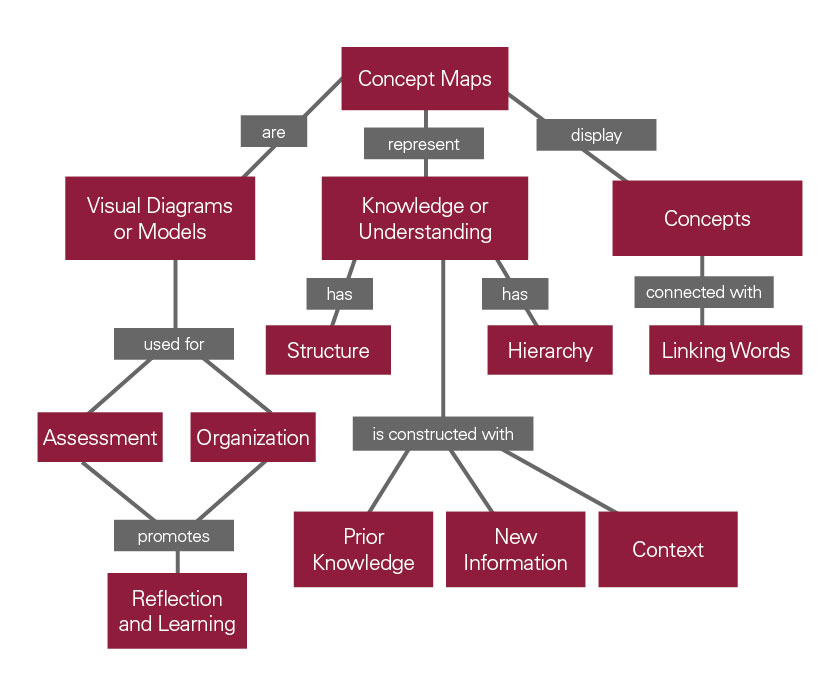Strategies for Understanding:
- On first pass, mark spots you do not understand.
- On second pass, focus on marked areas you still don’t understand.
Then:
- Break the problem/concepts down into parts; look at the surrounding text for clues.
- Check other resources.
Strategies for Comprehension and Recall of Information:
- After the initial reading, paraphrase and use imagery. Periodically when reading re-phrase the new material and try to form mental pictures of the concepts.
- Organize your notes: Networking means transforming the material into concept maps, or networks; you organize important concepts and represent their interrelationships in a network map. Use analogies: What is this information like? (See sample map below.)
- Identify key concepts, develop definitions and elaborations of concepts—differences and similarities among concepts. Identify main ideas and then fill in the details.
Strategies for Expanding the Information and Storing in Memory:
- Go back to the material and correct your understanding; expand on the material; store important information; try to combine and integrate information into one source; ask and answer practice questions. How can this information be applied to patient problems?
- Make it part of your long-term memory through periodic review: preview before class, review within 24 hours, end of week (7 days), just before exams, during breaks for future national exams. You must use information to retain it!

Resource: http://hsc.unm.edu/som/fcm/CNAH/docs/handbook_2004.pdf
